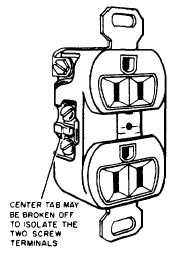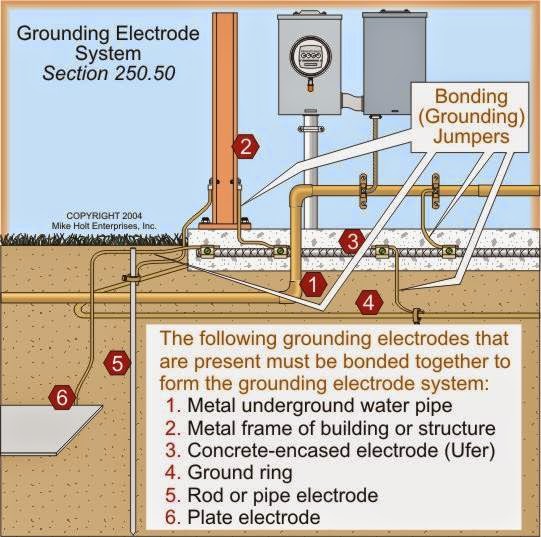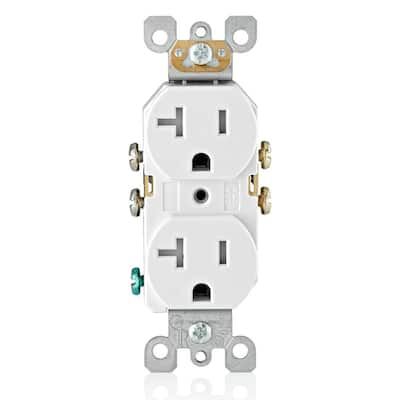
Receptacle outlets can be located conveniently for permanent furniture layout. In hotel and motel guest rooms, the maximum distance to a receptacle can be increased because of furniture layout. In dwelling units the maximum distance to a receptacle cannot be increased because of furniture layout. Since receptacles must be installed in accordance with the general receptacle provisions, they must be installed so that no point along the floor line in any wall space is more than six feet (1.8 m) from a receptacle outlet. Therefore, small-appliance branch circuits and countertop receptacles are not required.
#Nec residential receptacle requirements pdf images portable#
A portable microwave oven does not qualify as a permanent cooking provision. At least two small-appliance branch circuits must be installed, and receptacles must be installed in accordance with the countertop provisions. When a guest room contains permanent provisions for cooking, the requirements in 210.52(B) and (C) are applicable. While most hotel/motel guest rooms are not equipped with kitchen facilities, some are. Unless a guest room contains permanent provisions for cooking, it does not meet the definition of a dwelling unit. A dwelling unit must include space for eating, living and sleeping, and permanent provisions for cooking and sanitation. A dwelling unit is one or more rooms that will be used by one or more persons as a housekeeping unit. Where a guest room meets the definition of a dwelling unit, the receptacle outlets must be installed in accordance with all applicable requirements in 210.52. While 210.52(A) covers general provisions for receptacle placement, 210.52(D) specifies requirements for receptacles in bathrooms. Unless the guest room meets the definition of a dwelling unit, as defined in Article 100, only two of the eight subsections apply. Guest rooms in hotels, motels and similar occupancies must have receptacle outlets installed in accordance with 210.52(A) and (D). Some of the receptacle placement provisions pertaining to dwelling units are also applicable in hotel (and motel) guest rooms. Even though this is more than twice the required length, only one receptacle is required. For example, a single-family dwelling contains one hall measuring 21 feet in length. Regardless of the hallway’s length past 10 feet (3.0 m), only one receptacle is required. This subsection does not stipulate that a receptacle is required for every 10 feet of hall. Since a receptacle is required in hallways 10 feet (3.0 m) or more in length, at least one receptacle outlet must be installed. Measuring from the centerline, the hallway’s length is 11 feet. For example, one hallway in a dwelling has a right-angle and a left-angle turn. This method works whether the hall is straight or not. This subsection provides a different method for measuring the hallway’s length, which shall be considered the length along the centerline of the hall without passing through a doorway. In other subsections of 210.52 distances are measured horizontally along the wall line. The required receptacle can be installed on either side of the hall, but not more than five-and-a-half feet (1.7 m) above the floor. Because of the hallway’s length in this example, at least one receptacle is required. Whether measured from the left side or the right, the length is still 10 feet. For example, a straight dwelling-unit hallway measures exactly 10 feet in length. Where the hallway is straight, measuring the distance does not pose a problem. Since hallway receptacles are not usually blocked by furniture, they can be convenient for night lights, vacuum cleaners, etc. Just because a receptacle is not required does not mean that one cannot be installed. Since the length is less than 10 feet, no receptacle is required. For example, a hallway in a dwelling unit measures 9 feet 11 inches. A receptacle is not required if the hallway’s length is less than 10 feet.

In dwelling units, hallways measuring 10 feet (3 m) or more in length must have at least one receptacle outlet. Installing receptacles so that no point is more than six feet (1.8 m) from a receptacle outlet is not required in hallways. Hallways are not subject to the general receptacle-placement provisions in 210.52(A).

While basements and garages were the topic of discussion last month, this month’s In Focus begins with hallways, the last area in 210.52. Parts I through IX covered all but one of the rooms and areas in dwellings. These provisions apply to one-, two-, and multifamily dwellings (inside and outside.) While some of these provisions are general and apply throughout the dwelling, others are more specific and applicable only in certain rooms or areas. Receptacle-placement provisions are stipulated in 210.52(A) through (H).

Motor-load requirements are covered in Article 430. Article 210 covers branch circuits except for those supplying only motor loads.


 0 kommentar(er)
0 kommentar(er)
